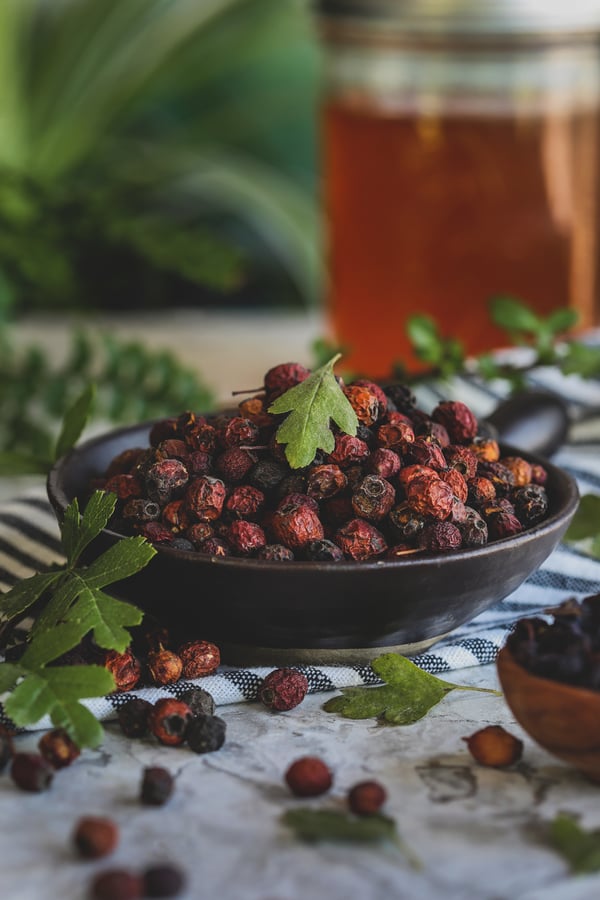I am a fan of Lynn Rosseto Kasper’s public radio cooking show The Splendid Table. I was particularly intrigued with a 2020 episode in which she talked about a recipe for butternut squash roasted with a cider reduction syrup that she made by simply reducing sweet apple cider from four parts down to one part. I thought—as I am wont to do—“What if I put herbs in that delicious syrup?”
I originally decided to play around with adding hawthorn berries to support heart health*. Then I also added blueberries. Then I tried bilberries. I finally concluded that a blend of berries is especially nice and you can use any dark-colored berry you want because they usually contain anthocyanin and antioxidants, both of which are traditionally know to support the cardiovascular system.*
The first key to making an excellent apple cider reduction syrup is using quality ingredients. The purest organic apple cider and herbs result in the best flavor and supportive benefits. I highly encourage you to find a local source for freshly pressed, raw cider! However, this recipe is also an excellent way to use up that apple cider in your refrigerator that you’re worried is going to go bad before you get to it.
Bilberry & Hawthorn Berry Apple Cider Reduction Syrup
Makes about 4 cups.
Ingredients
- 1 lb. organic dried hawthorn berries
- 1/2 lb. organic dried bilberries or 1 lb. fresh/frozen blueberries
- 1 gallon organic apple cider (sweet cider, not hard cider)
Directions
- Put berries and apple cider in a pot without a lid and bring to a boil over medium heat.
- Adjust heat and cook, stirring occasionally, until reduced by half.
- Strain out berries.
- Return strained syrup to the pot and continue cooking, stirring occasionally, until reduced by half again. If you would like a thicker syrup, you can continue cooking to reduce it even further.
- Set aside to cool a bit and then pour into a quart-size jar with an airtight lid. Remember to label with name and date made.
- Boiled cider will keep in the refrigerator for up to 3 months.
Pro Tip: Here’s an easy trick to see if your liquid has been reduced by half. Before cooking, use a wooden skewer, long wooden spoon, wooden ruler, or similar item to “measure” the depth of your liquid—put it in the juice/berry mixture to touch the bottom of the pot and mark a line on the skewer where the liquid hits. Measure half-way down from that mark and make another line. Now you can use this “measuring stick” to determine when you reach the half-way mark. When you strain out the berries, repeat the process so you can measure again when your syrup reaches the half-way mark.
Want to make other healthy herbal syrups?
Learn How to Make Your Own Elderberry Syrup!
You may also enjoy:

*The statements in this blog have not been evaluated by the Food and Drug Administration. These products are not intended to diagnose, treat, cure, or prevent any disease. We recommend that you consult with a qualified healthcare practitioner before using herbal products, particularly if you are pregnant, nursing, or on any medications. For educational purposes only.











